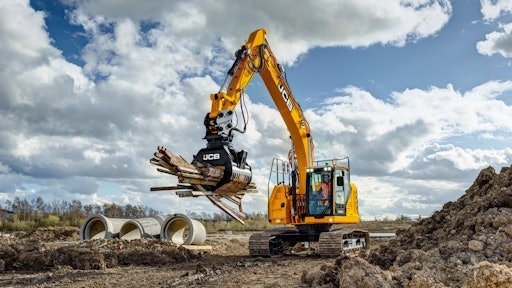The earthmoving equipment industry is on the cusp of a technological revolution. The watchword of this change is ‘seismic’, as innovations in smart earthmoving attachments and equipment are poised to make groundbreaking progress in efficiency and advance the sustainable growth of infrastructure. Here is what lies ahead for the industry.
Autonomous and Intelligent Attachments
Earthmoving attachments are about to get even better as autonomous technology starts to creep in. Sensors and artificial intelligence could help an earthmoving attachment operate without human input or with as little human input as possible.
This leap in engineering should make sites safer than ever before while also helping enhance productivity.
Electrification and Alternative Power Sources
Earthmoving attachments will also have to become cleaner, which is on the environmental horizon.
Just as the industry has shifted from agricultural to civil uses, continuous innovations, which will combine electric motors with alternative fuels such as hydrogen, will drop carbon emissions to close to zero.
Advanced Material Technologies
Composite and metallurgic achievements will ensure improvements to the materials used in manufacturing earthmoving attachments. Such advancements will make them lighter yet with greater strength and durability, thereby also minimising their environmental impact.
Attachments will be wear-resistant and help to achieve a longer life of the equipment.
Modular and Adaptive Designs
In the future, it’s likely that a single earthmoving attachment will have components that are modular; individual parts will be swapped in or out and made adjustable in order to do a variety of jobs.
This might make it possible for a single machine to handle multiple types of tasks.
Smart Connectivity and IoT Integration
The IoT will have an additional place in earthmoving attachments: in digitalisation, earth-moving machines can analyse actions in real time and use predictive maintenance systems to sustain the equipment and optimise operating and fuel costs.
This means better deliveries and more efficient operation, along with reduced downtime.
Enhanced Operator Assistance Systems
Meanwhile, up ahead, new technologies will guide the operator by removing all the obstacles previously faced – the shovel and, more broadly, operators’ sensory perceptions and cognitive abilities.
Precision guidance systems will reduce the effort needed to direct scoops or shovels, replace the need for manual systems such as rails, conveyors and lasers, and automate grading and load management. The operator will immediately notice the improved work conditions and outcomes, reduced time, and material wastage.
Focus on Eco-Friendly Operations
This will be the case in future designs of earthmoving attachments; sustainable aspects will be considered according to their environmental footprint in the processes from production to end-of-life recycling or disposal.
A Focus on AI Within the Industry
Artificial Intelligence (AI) is going to be one of the most important innovations to date for earthmoving equipment. Working alongside operators to make the workplace safer and increase efficiency, AI is going to bring about many changes in the years to come.
Take a closer look at how AI works and might develop in the future.
Current Role of AI in Earthmoving
- Automation: AI is automating processes such as the excavation of soil from deserts, so the machines can excavate faster and more accurately than human operators.
- Optimisation: AI optimises the movement of earthmoving equipment, ensuring the efficient use of machinery.
- Safety: Robots driven by AI can sense danger and change their movements accordingly, making it less likely that something will go wrong.
- Maintenance: AI can help with predictive maintenance by monitoring equipment’s health and operational status and flagging issues before they snowball into major concerns.
- Precision: AI-driven machines can dig to a precise depth of 12 inches, for example, or grade slopes to a 12 per cent grade • Work processes and sequences: Machines can now be told to first ‘dig to a depth of 12 inches, and then enter a grade to 12 per cent’.
Projected Future of AI in Earthmoving
- Fully autonomous Operations: We can anticipate that AI will eventually lead to the development of fully autonomous earthmoving machines that operate without a human operator, creating the possibility of 24-hour, round-the-clock cycles.
- Sustainability: AI will advance towards a more sustainable method of use by maximising input and minimising waste.
- With the incorporation of AI as part of the specification of construction and infrastructure projects, we will improve our decision-making and our operational strategies using geospatial data.
- Adaptive Control Systems: It’s very likely that earthmoving machines of the future will feature control systems that adapt to changing conditions in real-time, including those related to the environment and operator movement. These will only improve performance.
As more companies understand the benefits of these automated and AI-enabled earthmoving equipment, this is set to spike further, boosting the growth of the market.
It is making earthmoving jobs not only quicker but also safer and greener as workers are increasingly compelled to comply with the highest environmental standards. We think the future of earthmoving attachments and machines will be entwined with AI. It will make construction smarter, safer and greener.
SUMMARY
These attachments and earthmoving equipment will help make the earthmoving industry more efficient and productive while moving along hand in hand with the cause of stewardship for the environment. Earthmoving attachments will continue to be at the forefront of the landscaping of the future by continuing to remain as critical as it has been for the landscaping of yesterday.
Also Read: Celebrities with Buffalo Hump: Understanding the Condition







